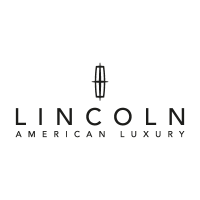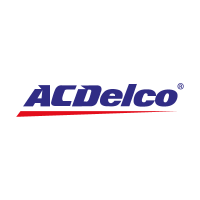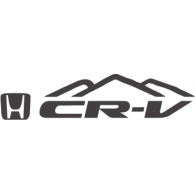The logo is the concept situated at the intersection of the fields of design and business; it is a product of the creativity and the talent of a designer, but it has a certain promotional purpose. The importance of a logo is so great because the potential clients are basing their first opinion on it. In a world with so many opportunities, even if we don’t like it, the first opinion is quite important and it is sometimes vital to attract people that still don’t know the quality of your products and services.
In fact what is the definition of a logo?
A logo is a graphical symbol-usually made from various shapes, icons, and/or text- a word or a small group of words- in most cases the name of the product or company that owns the logo. Maybe it sounds as a new discovery, most people think a logo is as new as the Internet, but it isn’t true…the logo is an old concept and this is proved e.g. by the bricks from ancient times in Mesopotamia which were stamped with various graphics and text.
The Dilemma of Logo Design
By far easier to understand the power of the logo is the fact that it makes the connection in the mind of the client between you-the owner of it and the high quality… “I will buy this T-shirt because it is made by XZ (where XZ is your favorite manufacturer of clothes) look at the logo situated in the upper left part of it. I bought a similar one last year and I am very content with it!”. Now I hope you realize how important a logo is!
The person who creates logos is naming himself or is called by others a logo designer. The dilemma of a logo designer consists in the criteria that he/she should meet :
– First of all the person who creates logos is a talented designer who should have solid acknowledge about design and graphics. This framework reveals the artistic part of the logo designer where creativity, imagination, originality and sometimes innovation are his/her strong suit.
– Secondly he is a person who deals with software. A logo is created with the aim of software; here the realistic part of the creator is emphasized.
But being a good logo designer implies other features as:
- Creativity, nothing could be done without it. A logo that has nothing interesting surely won’t have positive effects on the owner and that is a disaster for the logo designer.
- Attention for each details– it is often happening for a logo to have a hidden message or meaning… a logo designer should pay attention to all the details and should try to see the logo from multiple points of view with the purpose to notice any small changes that could improve it.
- Diplomacy– clients don’t know a lot about logo design, but they consider their opinions as being the best and this is the core of a potential conflict. A logo designer, but it could be generalized at all the designers should be very diplomatic and have the patience to explain to his clients that they could be wrong. (I super hate the idea “I pay, I decide”, I met previously some kind of clients telling me that, but I wonder why you hired me if you know how to accomplish the project by yourself? Anyway, I finished the projects and the great success was that I gained experience in diplomacy). A good and detailed explanation of the problem in addition with the wish of the client to listen to you is the perfect solution to solve the little cold war between you and him.
- Good ability to promote yourself– is a feature that works well with the previous one. It’s strange and unfair, but the good projects aren’t taken by the best logo designers, they are taken by the talented ones that know how to satisfy a client, to communicate very well with him and of course to promote themselves as being the best solution.
- Perfect user of Photoshop and Illustrator– logos are created with the aim of these two major applications, so it impossible to be a good one in you brotherhood without knowing how to handle the Adobe wonders.
If somebody passes the exam of these features then he is on the good way of becoming a logo designer. Even if creating a logo implies creativity and freedom of thinking and actions there are some rules to obey by in your process of creation. These rules aren’t unbreakable, but it is highly recommended to respect them. A good point in making you read my list of rules is that you will find the explanation of the necessity of respecting these.
KISS- Keep it Simple Stupid!

A logo should be simple, easily to understood and to remember. Keep in mind this judgment: nobody as ordinary people would make any effort to retain a logo; having a very simple one could increase your chances to be retained. Usually people remember what is the best or the worst. From both statements we can conclude that a logo, when it is retained it is often associated with high quality (I really hope that won’t happen the other case, the association with poor quality). But how should we make a simple logo? I have some solutions; if you have others please put them in a comment.
Use Few and Common Fonts
It was revealed along the time that the majority of great logos having in their composition text use common fonts as Arial, Times New Roman, Calibri and Helvetica. It is highly recommended to not use more than two different fonts in a single construction.
More Than Three Colors Could be Dangerous
Another great trick in maintaining a simple look of your logo is to not use more than three colors; the huge majority of great logos respect this point, but once again I want to repeat that what I present is not a Decalogue…every rule is created to be broken. For example, a logo required for a kindergarten could be made up from more than three colors because the target people are children, they are considered to be lovers of the joyful play of colors.
Use Simple Shapes to Convey Complex Messages
It really doesn’t matter how simple your logo is, it could be only a single letter, if it is liked to a lot of people and appreciated by the specialists, then it is a quality one. A complicated shape of a logo doesn’t mean that it conveys a complex message…be sure of that and keep in mind when you create. Much more, a complicated logo renders the message in a complicate way. A good logo designer manages to put in a very simply format a complex and complete message; it could be put to a test by the designers.
Make it Timeless

As I said previously a logo should be retained by as many people as possible. Changing the logo along the time makes this fact impossible; more, the multiple changes are interpreted as untrustwordy. A timeless logo is the basis of creating a great company or brand; having a logo that is unchanged for many years leaves the message that the owner is very serious, stable and these features create the feeling of safety and trust to potential clients –and that is the final purpose of any logo. The question rising is: “How to make a logo timeless?”
Create a Logo for Your Client, While not being (More or Less) in Trend
We all know every year appears something new that is in trend and the clients require the logo designers’ creations with the intention of respecting the rules of the moment. It seems as a suicide, but for the sake of the term “professional” do not do that! Maybe at the moment you are appreciated, but in a short period the logo will be old-fashioned; the reaction of the clients – the logo designer was stupid and I am suffering now. To avoid this situation explain to all your clients that a logo should be the same even if it is summer or winter. It requires hard work to win the fight with the time, but if you realize this condition then a glorious page from the history of logo design turns in your favor. Personally, I believe that explaining very calm, with the needed details any client can understand your principles of professional designer; much more you work for his/her advantage not only for your own.
Black and White is Always a Good Solution
Black and white are my favorite colors, because in this situation the concept is highlighted and not the colors, the shapes or fonts. A huge advantage in creating black and white logos is the fact that these won’t ever go out of fashion. Usually, a logo that is rendered fine in black and white could look well in all appropriate color palettes. A logo along the time will suffer small corrections (but that doesn’t mean that it is rebuilt); sometimes only changing the colors could make a huge difference and that is logical: a logo that locks well on black and white, as I said previous, surely looks well in another color palette.
Create a Logo Respecting the Rules of Good Design not the Rules of the Bad Clients
It can happen that you encounter a client who believes he is super talented and that he has the right to interfere with you in the process of creation. The one who knows how to make a better logo than you is God; talented people were influenced by Him to write the rules of good design, so respect these when you work, don’t let somebody manage your creativity. Everything you will ever create should respect these rules. It is amateurish to let anyone that has no connection with logo design what so ever to influence you, and in the worst case to let the client suggest you what is wrong or correct.
On the other hand, don’t fall in the other extreme: it is a must to have some specifications about the preferences of the client, and that is highly appreciated. As a conclusion to this point: the client should provide you the initial idea… the more details the better, but keep in mind that you are the master of the creation process! Maybe it isn’t a 100% specific rule, yet I had a strong feeling capturing me to not write this paragraph!
Until now we established the requirements for a logo designer, the basic rules to follow, but what about the creation itself?
Firstly, there isn’t a clear and secrete recipe…we all are different and the process of creation and its strategy depends all on the mentality of every single creator. Secondly, there are some steps met by all great logo designers and this will surely work with all the others.
Here I will present my steps, but I will let you know which my specific ones are and which are of the majority of the logo designers.
- The meeting with the client
- The research
- The sketching
- The revision with the client – Choosing the concept
- The effective creation
- The final meeting
- Free your creativity
1. The Meeting With the Client
The first step is vital in most of cases, and it is compulsive for any designers. It consists in the meeting with the client. At this point, you as logo designer should present a list of questions to your client in order to find out which are his/her requirements, preferences and field of activity. Some of the questions sound like: “Which is your field of activity”, “What is the purpose of the logo in your business”, “Which are the expectations from this logo?”, “You have a website or not?”, “Which are the favorite colors” and so on.
The importance of this step consists in the fact that without it, you as a creator don’t know how to start. For example, every field of activity has its specificity… a logo used for a website that treats the problems of young mothers differs very much from the one used for a financial agency.
2. The Research
The next step is all up to you and it is also compulsory: the research. It is about your hard work of full documentation about the logos in the domain of the client and about the logos of the competitors. This could take more for less experienced and maybe at lot less to the designers with many years of experience.
3. The Sketching
After a good and complete research the next obligatory step is the sketching. Many white papers, a small pencil, solid acknowledgment and a lot of creativity are needed. Here are the concepts are born (black and white) and the PC shouldn’t be taken into account. More sketches, more potential logos, is equivalent to having more chances of creating a masterpiece.
I personally start by sketching a logo for a few hours, and then I take another project that has no connection with my logo… it is like an active break and it is really working for me. After a day I start a new episode of sketching and if the results aren’t as good as I expect I try again another episode. Don’t know how you are, but I can’t be creative for more than a few hours during a day…please let me know how long you could be creative during a day (use the comments for that).
4. The Revision with the Client – Choosing the Concept
This step could be sometimes skipped, but it is not recommended. Usually, at this moment the logo designer comes to the clients with some proposals presenting the initial concepts…of course these are only a few drawings on a paper. A good client that has time to listen to you and help you to decide the future logo will chose one or two (or more if he/she is undecided). The duty of the designer is to implement these in *psd or *ai format (the usual extensions of the Photoshop or Illustrator). Here comes the change: till this step was working the artistic part of the designer; further the specialist in software.
5. The Effective Creation
Here is a single fact that could help you: hard work!
6. The Final Meeting
If the client likes your product, it could be the last step in the overall process of creation. Unfortunately, it could happen that the client dislikes all the proposals and the designer should start again from sketching or even researching.
Here is almost the end, there are two ways:
- -the client is happy and pays your work;
- -the client is unhappy and your life turns into hell.
7. Free Your Creativity
In my own process of creation I have an additional step that could seem in vain or represent a loss of time. Escaping from worries my imagination is at full power and seems that I have no boundaries regarding creation. Immediately after the deal is finished with the potential client, I work on some new projects that represent only my personal point of view on the logo I have just finished. Believe it is a real training and the results are super interesting…try it, doesn’t cost anything!
Please let me know if you have some additional steps in your process of creating logos!
[Via Instantshift]














